
Ducati Diavel Service Manual: Removal of the evaporative emissions canister

Loosen the screws (9) securing the plate (8) to the tank.
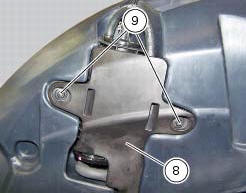
Slightly pull the plate (8) with the canister (13), remove the clamps (3) and (12) and connect hoses (7) and (14).
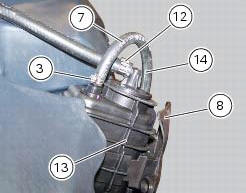
Release the retainers (b) of the plate (8) to remove it from the canister (13).
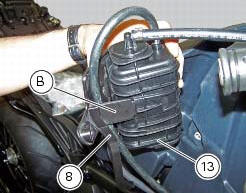
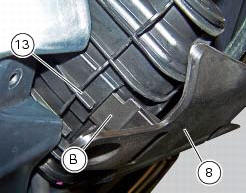
Disconnect the hose (11), removing the clamp (12).
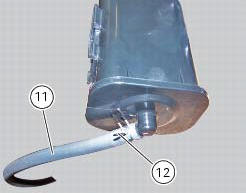
Should it be necessary to replace one or more hoses, follow the procedure outlined in the paragraph "positioning the hoses / clamps and canister filter" of this section to determine the hose routing on the vehicle.
If removed, refit the rubber cover (10) on canister (13) using lubricant specific for rubber.
Fix cover (10) by positioning the tab (c) as indicated.
Introduce the spring (15) inside the hose (11) and reinsert the hose on fitting (d).
Note
The spring (15) must be introduced on the side of hose (11) which will be introduced inside the fitting (d).
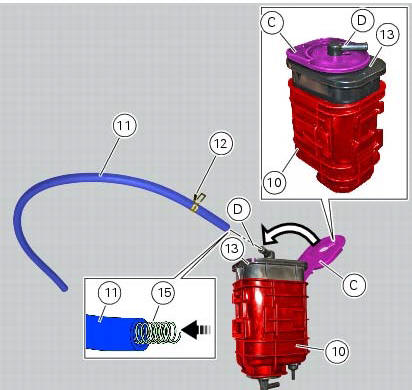
Fix the hose (11) with the clamp (12).
Fit the clamp (7) on the hose (14).
Mount the hose (14) on the upper fitting of the canister (13) and fix the hose (14) by means of the clamp (7).
Fit the plate (8) as indicated by inserting its lateral brackets (b) (on the right and left side) completely inside the slots on the rubber cover (10).
Note
In case of difficulties upon reassembly of the plate (8) we recommend to apply lubricant specific for rubber to the lateral brackets (b).
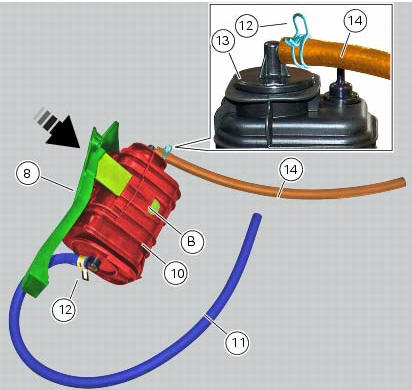
Place the plate (8) with the relevant canister on the tank and tighten the screws (9) to a torque of 4 nm +/- 10% (sect. 3 - 3, Frame torque settings).
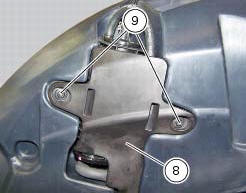
 Evaporative emissions canister system (usa versions only)
Evaporative emissions canister system (usa versions only)
Usa models are equipped with an additional system with an evaporative
emissions canister that prevents fuel fumes from
being discharged into the atmosphere.
The breather hose (4) is connected to t ...
 Refitting the evaporative emissions canister
Refitting the evaporative emissions canister
To refit, carry out the removal operations in reverse order, making sure to
locate the hoses as shown in the figures at the
end of the chapter.
Positioning the hoses / clamps and canister filt ...
Other materials:
Indicator air - air temperature
This function shows the external temperature.
Display limits: -39C - +124C
In the event of a sensor fault (-40C, +125C or disconnected), a string of
dashes "- - -" (not flashing) is displayed and
the "vehicle/engine diagnosis - eobd" light comes on.
Note
When the vehicle is stopped, the ...
Riding safety
The points given below are applicable for every day
motorcycle use and shoud be carefully observed for safe and
effective vehicle operation.
A motorcycle does not provide the impact protection of an
automobile, so defensive riding in addition to wearing
protective apparel is extremely importa ...
Removal of the crankshaft/connecting rods assembly
After separating the crankcase halves, withdraw the crankshaft (6) complete
with connecting rods (2).
...